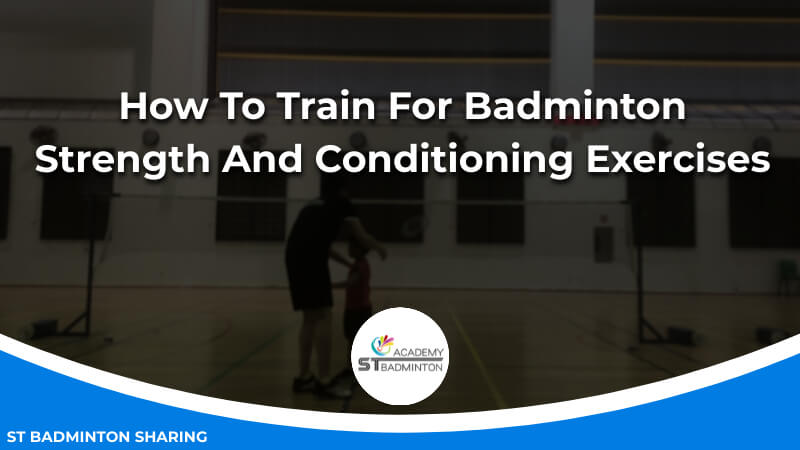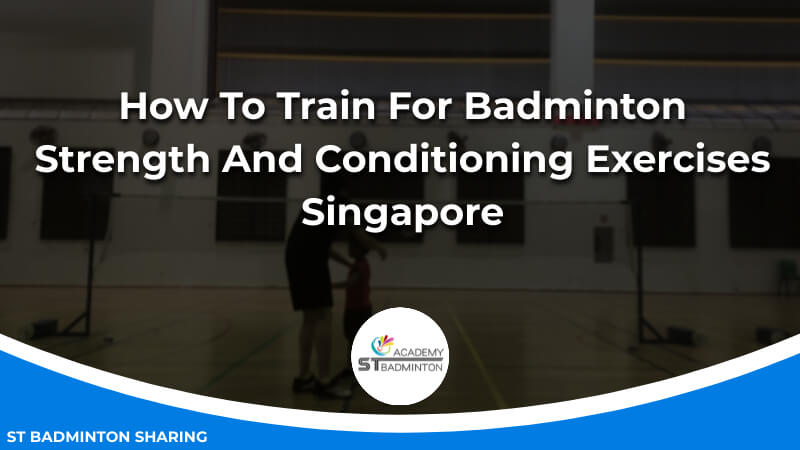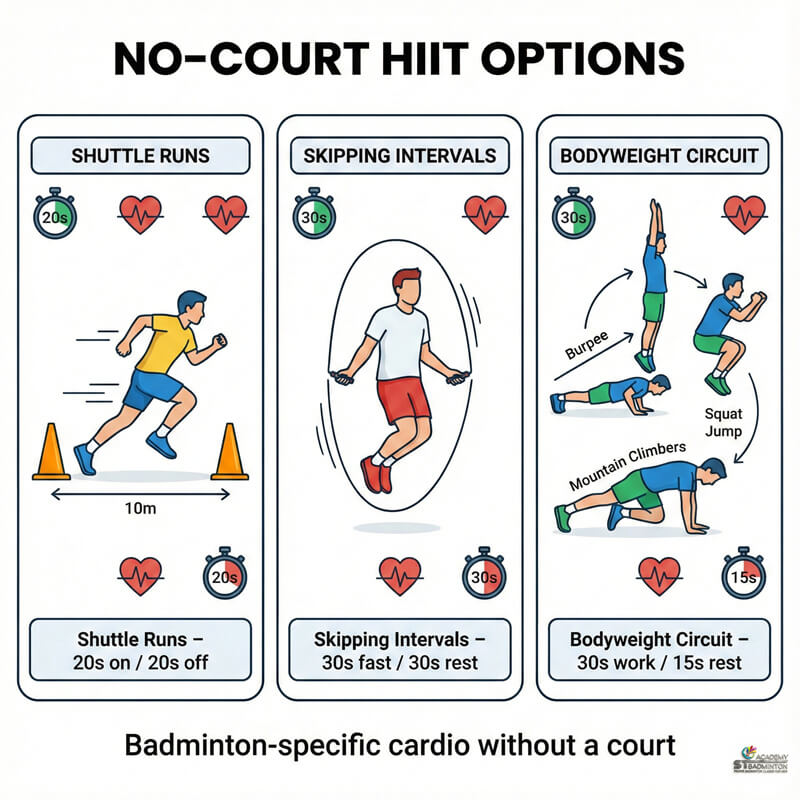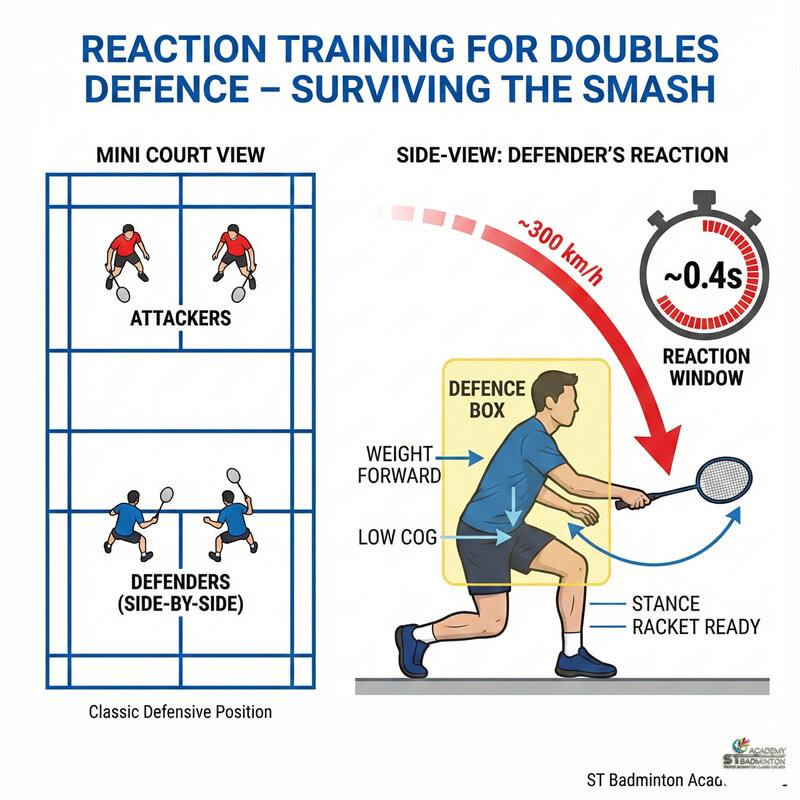Welcome to ST Badminton Academy’s badminton training in Malaysia! I know how important it is for you to stay in peak condition and be at the top of your game – so let’s talk about specific exercises that will give you an edge over the competition!
In this article, we’ll cover a range of strength and conditioning exercises tailored specifically for badminton players. Whether you’re just getting started or have been playing competitively for years, these exercises are designed to improve your agility, speed, power, and endurance.
So get ready – with my help, you’ll become unstoppable on the court!
Core Strength Exercises
Hey Badminton players, let’s talk about core strength exercises.
If you’re serious about your game and want to take it to the next level then building a strong core is key!
Speed drills and reaction drills are great ways to do this – they’ll help you move faster, react quicker, and be more agile on the court.
When performing speed drills, make sure that you focus on fast movements with quick reactions – these will train your muscles for explosive power when needed during a match.
Reaction drills can also help improve your reflexes so that when an opponent hits the shuttlecock, you’re ready to respond in time.
To get started, try doing 10-15 seconds of high-intensity exercise followed by 30 seconds of rest and repeat 3-4 times – if you keep up this routine consistently throughout training sessions, you should start noticing results pretty soon!
Now let’s move on to cardiovascular training…
Cardiovascular Training
Great job on the core strengthening exercises! Now, it’s time to work on your cardiovascular training.
As a strength and conditioning coach, I’d recommend resistance running for badminton players who are looking to improve their overall fitness level. Resistance running is an effective way to increase speed, agility and endurance – all key components of any badminton player’s game.
Plus, since you already have some good core stability from the previous section, adding in interval sprints will help to build power and explosiveness while also improving your recovery times between points.
Just like with anything else we do when training for badminton, variety is important here as well. So don’t just stick with one type of resistance running or intervals; mix things up and challenge yourself by trying different methods every few weeks so that you can really maximize your gains and reach peak performance levels during match play.
Speaking of which… next up let’s look at how plyometric exercises can give us the explosive edge we need in our games!
Plyometric Exercises
Let’s start with box jumps – they’re great for developing lower body power and explosiveness. Make sure you land in a controlled fashion and avoid bouncing off the box to minimize the risk of injury.
Now let’s move on to jump squats – these are great for building lower body strength and power. Make sure you keep your core engaged and your back straight as you jump up and land – it’s important to land softly to reduce the impact on your joints.
Box Jumps
Hey everyone, let’s talk about one of the best plyometric exercises for training badminton – box jumps!
These are a great way to improve your power and explosiveness on court. They can also help you develop better footwork drills as well as strengthen your lower body muscles.
With box jumps, all you have to do is find a sturdy object like a wall or bench and jump onto it with two feet. Make sure that the height of the box isn’t too high so that you don’t injure yourself.
Take your time when doing this exercise and make sure that each rep is done correctly in order to get maximum results from them. You should also take dietary supplements such as protein powder before performing these jumps to supplement energy levels during workouts.
So what are you waiting for? Get jumping now and enjoy improved performance in no time at all!
Jump Squats
Now that you have a handle on box jumps, let’s shift gears and look into jump squats!
These are another great plyometric exercise to increase your power and explosiveness on court. Plus, they will also help strengthen the muscles in your lower body.
To do them correctly, all you need to do is stand with feet shoulder-width apart then squat down until your thighs are parallel to the ground before jumping up as high as possible.
You can also incorporate medicine ball throws or power skips for added resistance and intensity. So if you want to take your game up a level, give these exercises a try today!
Balance And Coordination Drills
If you want to become the best badminton player, then it’s essential that your balance and coordination are on point. As a strength and conditioning coach, I always recommend my athletes perform regular drills to enhance both of these skills.
Here’s some exercises to try out:
| Exercise Category | Exercise Description |
|---|---|
| Mental Focus Drills | Stand on one leg while counting backwards from 10. |
| Walk across a beam blindfolded, focusing on staying balanced. | |
| These activities enhance mental focus, awareness, and reaction time. | |
| Reaction Time Tests | Have someone toss an object towards you in random directions. |
| React quickly by catching it midair or hitting it with a racket if necessary. | |
| Regular practice improves reflexes, essential for success in sports, especially badminton. |
These balance and coordination drills should help give you the edge when playing badminton. Next up we’ll look at mobility stretches that could potentially increase power output during matches.
Mobility Stretches
Now that we’ve covered some balance and coordination drills, it’s time to move on to mobility stretches.
Mobility is key for badminton athletes – if you want to be able to hit those shots with speed and agility, then your muscles need to be flexible enough! Plus, stretching can help reduce the risk of injuries when playing.
I’m sure I don’t have to tell any of you how important flexibility is in this game. Stretching helps build a strong foundation so you’re ready for all those speed drills and agility drills ahead.
So let’s make sure we dedicate plenty of time towards getting our muscles warm before every session – trust me, it’ll pay off! And remember: stretch slowly and gently; don’t rush things!
Frequently Asked Questions

How Often Should I Train For Badminton?
Hey there, so you’re wondering how often you should train for badminton? Well, the answer really depends on your goals.
As a strength and conditioning coach, I would recommend structuring your program around nutrition timing and rest intervals in order to get the best results from your training sessions.
If you want to increase muscular strength or endurance then it’s important that you’re aware of when your body is at its peak performance level and plan accordingly.
On top of this, make sure that after each session you are allowing yourself enough rest time to let your muscles recover fully before the next round of training.
It’s all about finding a balance between pushing yourself hard while also taking into account any physical limitations that may arise.
What Dietary Changes Should I Make To Support Badminton Training?
Did you know that 95% of athletes who reach peak performance make sure they get the nutrition their body needs?
If you’re looking to step up your badminton game, then dietary changes are a great place to start.
As a strength and conditioning coach, I recommend focusing on nutrient timing and meal planning for optimal results.
Taking the time to plan out meals that provide essential nutrients like protein, carbs, and healthy fats will help fuel those intense training sessions – aiding in recovery too!
With the right diet in place, you’ll be able to take your badminton skills to the next level.
What Equipment Is Necessary For Badminton Training?
If you’re looking to get into badminton training, there’s certain equipment that you’ll need.
As your coach, I’m here to make sure you have all the right gear!
Apart from a racket and shuttlecock, it’s also important to invest in quality sports clothing such as socks and shorts for optimal performance on the court. Other than choosing a good racket and also remember to choose the best racket restring in Malaysia.
Also don’t forget about alternative types of training – like regular stretching and conditioning exercises – which can improve your overall court strategies.
Make sure to stay well-equipped for badminton practice so that you can enjoy yourself and reach new levels of excellence!
Are There Any Specific Warm-Up Exercises To Do Before Badminton?
It’s important to warm-up correctly before starting any badminton training session.
As a strength and conditioning coach, I recommend engaging in stretching exercises and following the correct technique when warming up for your session. Doing so helps prepare the body for more strenuous activities later on.
Stretching is a great way to increase flexibility and reduce injury risk while playing badminton – even if you’re an experienced player!
A proper warm-up should take at least 10 minutes, including dynamic stretches that focus on specific muscles used during badminton such as calves, hamstrings, quadriceps, and hip flexors.
Make sure to move slowly through each exercise and avoid bouncing or jerking motions as this can put unnecessary strain on the joints.
Following these steps will ensure that you are well-prepared for whatever athletic endeavors lay ahead of you!
Are There Any Specific Drills I Can Do To Improve My Badminton Performance?
Hey there, when it comes to improving your badminton performance, you need to be focusing on drills that focus on core strengthening and stamina building.
That’s why I recommend adding exercises such as mountain climbers or burpees into your routine.
You can also incorporate agility drills like shuttle runs or ladder drills which will help improve your footwork and quickness on the court.
All of these elements combined will make an immense difference in how well you perform during a match!
Learn The Best Badminton Training in Malaysia
If you want to maximize your badminton performance, it’s important that you take the time to train properly and make dietary changes.
The average professional player will spend up to 45 hours per week training with a coach and strength and conditioning specialist. This kind of commitment is not always necessary for recreational players but it does illustrate how much care needs to be taken when training for this sport.
I recommend starting off by committing 3-4 days per week to badminton specific drills, warm-ups, mobility exercises, and strength training.
You should also aim to get 8-10 hours of sleep each night as research has shown that athletes who do this are 38% more likely to perform better in competitions than those who don’t.
With dedication and perseverance, you can reach peak performance levels in no time at all!





